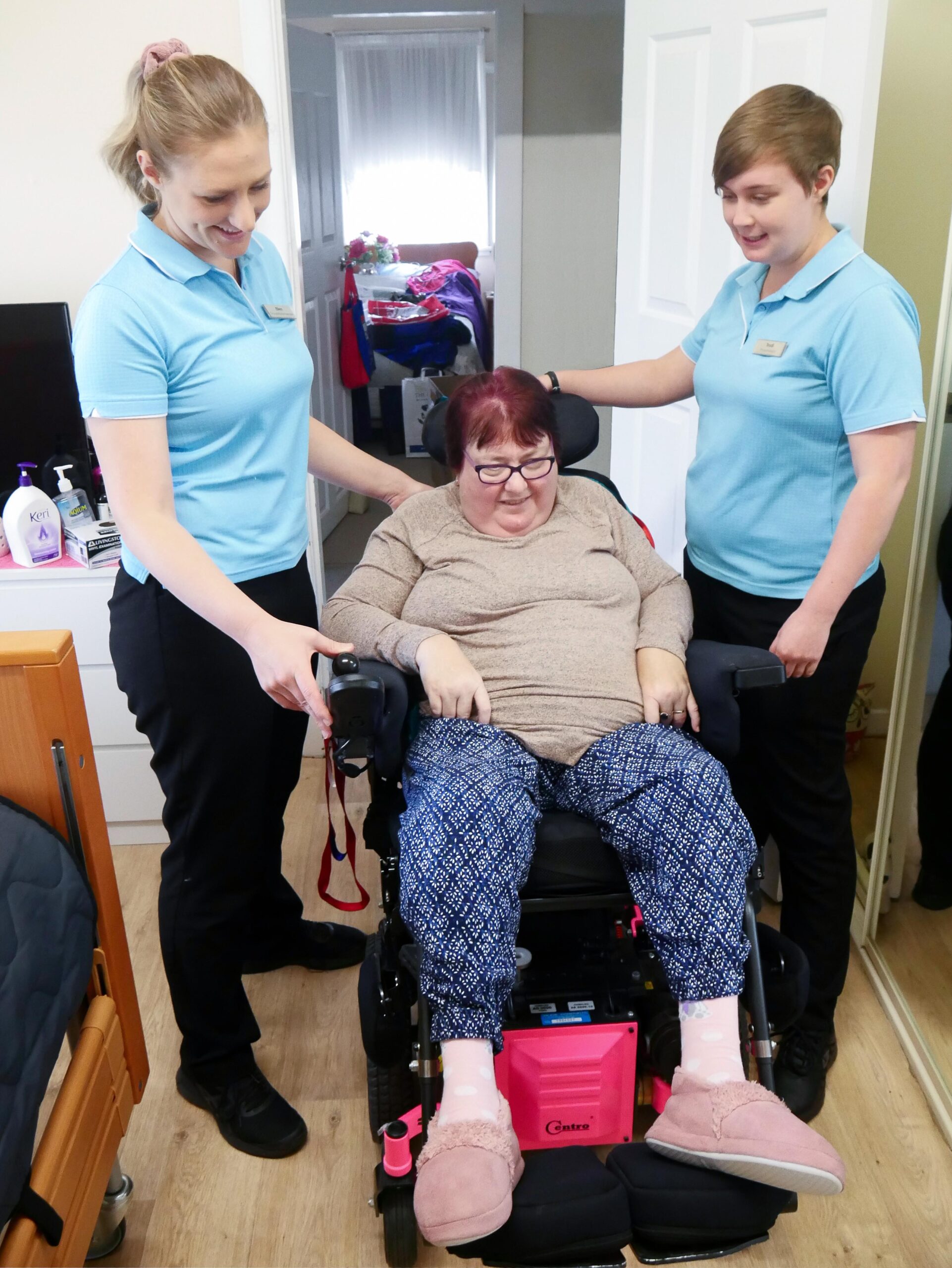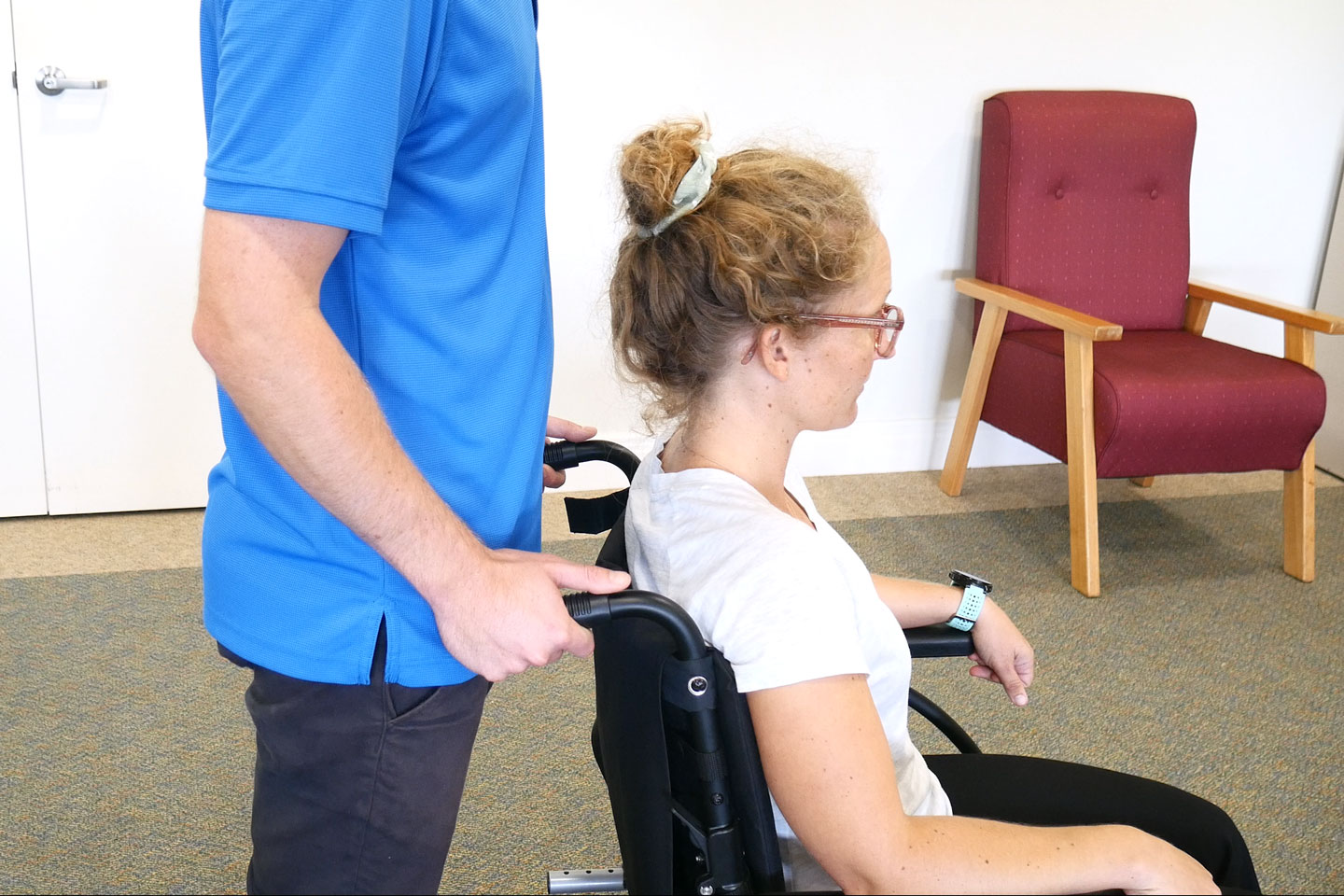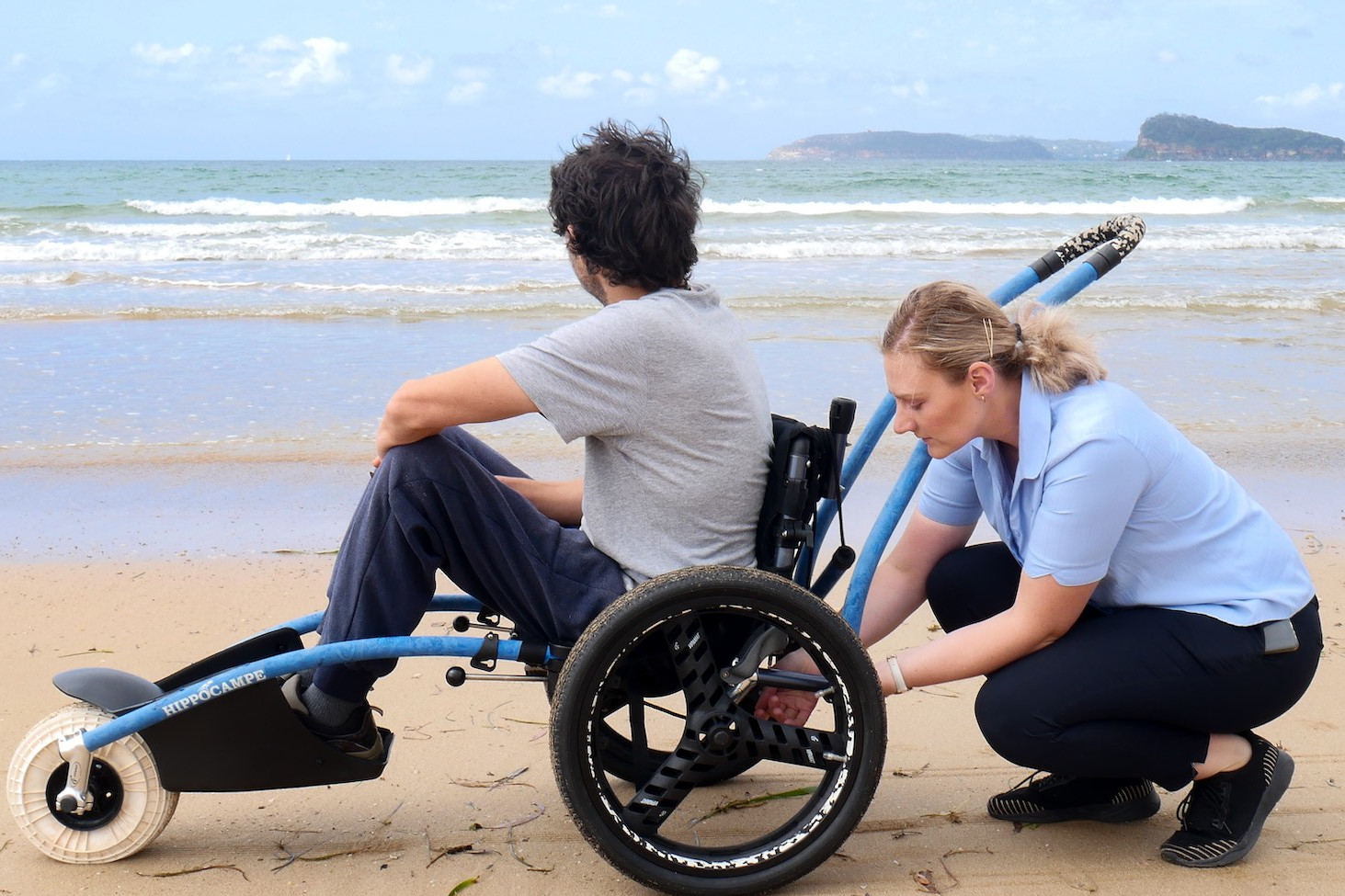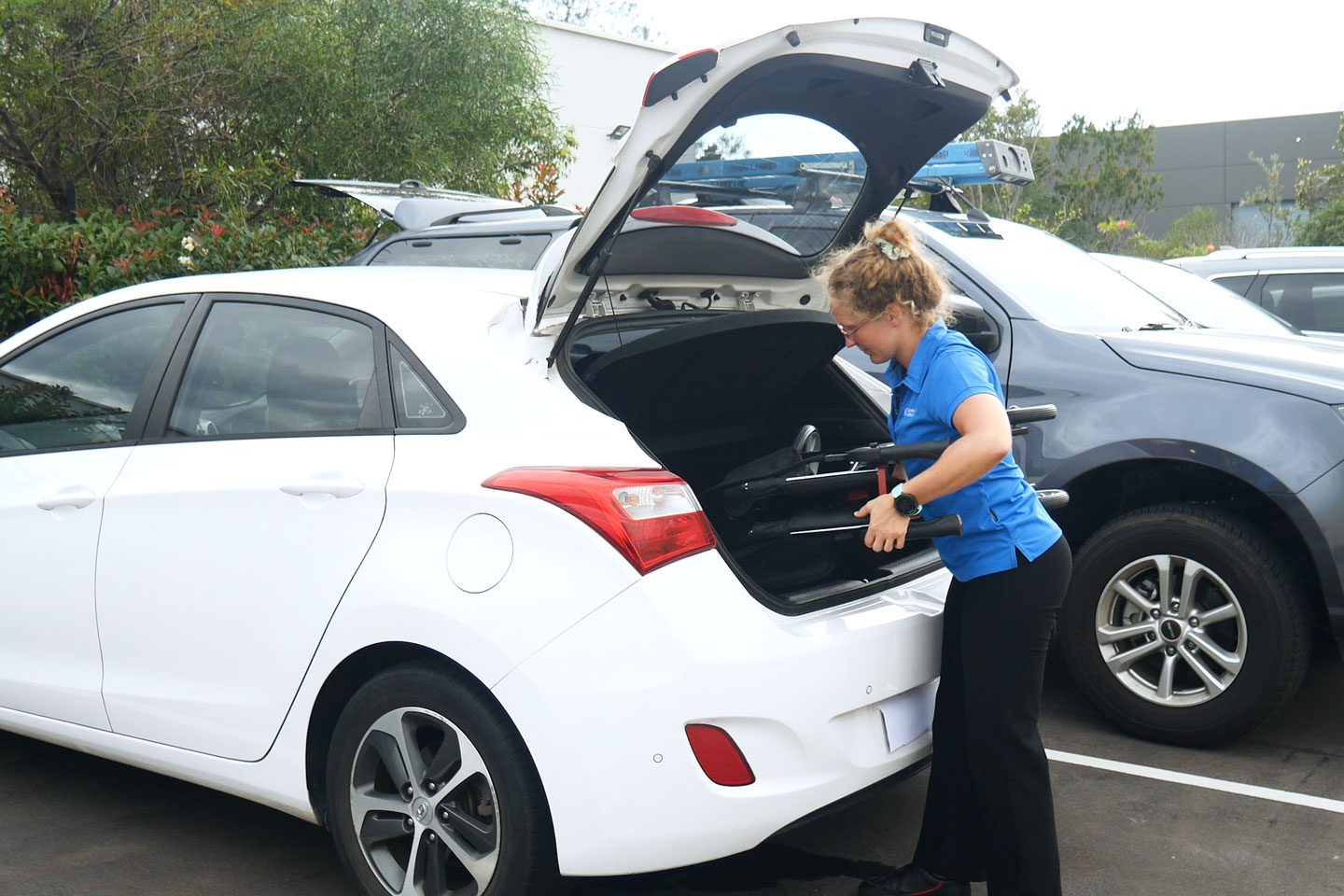Wheelchair Prescription Services
Our Occupational Therapists at Community Therapy help a wide range of people with the assessment and prescription of wheelchairs.
Our team is mobile across Newcastle, the Hunter, Central Coast and Port Stephens of NSW. Our wonderful team will visit people in their home to perform wheelchair assessments, trials, funding requests, training and ongoing support.
Wheelchair Trial
Typically, a wheelchair trial is required. It may be with an equipment provider bringing wheelchairs to a person’s house to trial, or it could be organising a joint visit at an equipment supplier’s warehouse or store where we can try many types of wheelchairs.
After this, we confirm the wheelchair is suitable for the person from a functional perspective, and the person also has a choice and control around their wheelchair options that are suitable for them (i.e. colour preferences, fabric, etc).
We then move on to the required submissions of any reports for funding schemes, such as the NDIS.

Wheelchairs Customised To Your Individual Needs
There are manual wheelchairs and electric wheelchairs and in both categories, there exist variances in the specifications of wheelchairs, in particular, the ability to customise each wheelchair.
Our Occupational Therapists are skilled in knowing what sort of wheelchair to assess and prescribe to someone, the range of wheelchairs available, and the available customisations.

Powered Vs Unpowered
Typically, the choice about the suitability of a powered or non-powered wheelchair is usually made during an Occupational Therapist’s initial assessment.
This is because it is necessary to understand why someone needs a wheelchair, what they are looking for, and what objectives they want to accomplish. This is considered in combination with the patient’s functional capacity and/or physical capacity.
For instance, a manual wheelchair may be appropriate for someone who can walk short distances but requires a lightweight folding wheelchair to move in a car. They can push themselves or be pushed by someone assisting them for longer distances such as visiting shopping centre.
Whereas a powered wheelchair is often for somebody requiring more independence with long-distance locomotion, or is unable to walk at all, uses the wheelchair at all times in and around their home to move.

Safety Features
Safety systems or safety considerations for wheelchairs vary, depending on non-powered manual wheelchairs or powered wheelchairs. During a wheelchair trial, our Occupational Therapist goes through our wheelchair safety assessment, where we look at safety operating procedures of the type of wheelchair.
During a wheelchair trial, our Occupational Therapist goes through our wheelchair safety assessment, where we look at safety operating procedures of the type of wheelchair.
- Transferring to and from the wheelchair
- Independent use, or assistance from carers
- Lifting and transfer equipment, both in the home and to vehicles
- Operating the wheelchair, turning, mirrors, reversing, braking, charging, etc
- Emergency braking
There are typically more safety considerations for a powered wheelchair because of the speed involved and the driving component of the wheelchair, and automation.

Home Modifications to Support Wheelchair Use
In most cases, when somebody requires a wheelchair or a powered wheelchair, there may be environmental considerations within that person’s home and on the thresholds of entering and exiting the home.
Sometimes people are already living in suitable environments with no thresholds; all of the doors and openings and bathrooms and bedrooms are accessible with that new piece of equipment.
However, our Occupational Therapists will complete a comprehensive assessment looking at all aspects of operating the wheelchair within the person’s environment to consider if any home modifications are required. This may range from small pieces of equipment, such as portable threshold ramps, to significant changes, such as bathroom renovations and ramps for entering and exiting a home.

Read a Wheelchair Success Story
We’re always looking to support people in engaging in the meaningful goals they wish to engage with. It varies significantly across individuals, and it affects the kind of wheelchair equipment that individuals purchase or are prescribed.
A recent success story was gaining funding for a beach accessible wheelchair for a person who wanted to catch fish at the local beach. Moreover, the wheelchair could also be used around the home where the client loved to cook healthy meals for the family, how great!
We take the time to understand each person’s individual goals, as we know how meaningful they are to achieve!

Booking Wheelchair Prescription – Who We Work With
Our Occupational Therapists support older adults and people living with disabilities through funding schemes, such as:
- NDIS
- Lifetime care and support
- Home care package program
- Commonwealth home support program
- Short-term restorative care program
- People also access our services privately paid with rebates available from private health insurers or medicare

FAQ
-
How much does a wheelchair cost?
Wheelchairs vary dramatically in their pricing.
There are manual wheelchairs that can sometimes be several hundred dollars. These are lightweight and low-cost pieces of equipment suitable for putting in and out of a car and helping with intermittent short distances, typically pushed by someone else caring for a person.
Wheelchairs can also be highly customised, powered that can tilt and spin on their axis and can be operated with different pieces of technology, such as chin operated wheelchairs for those that aren’t able to use their hands or upper limbs to support the control.
It’s really important to begin the process by understanding what type of wheelchair may be considered and what type of budget there may be, particularly if there were budget limitations from a funding scheme or someone’s budget. Then we can start to explore the options for that person to consider, meeting their meaningful goals.
-
What is the difference between a powered wheelchair and a powered scooter?
Sometimes those terms are used interchangeably; however, there is a difference.
Typically, a mobility scooter is a wide-based four-wheeled piece of powered equipment, which often has more ability to traverse different terrain and is designed with a more “off road/buggy” wheelbase.
However, there are large variances in mobility scooters as well.
Regarding a powered wheelchair, these pieces of equipment are typically more suitable for flat surfaces, such as within households, along properly surfaced roads or pavements, and in and around flat retail areas, such as shopping centres.
However, you can see that there can be variances between both, and there are pros and cons. Typically, when a powered wheelchair is being considered, a mobility scooter may be considered for some people as well.
A powered wheelchair is often more suitable for somebody needing advanced seating or postural support and advanced tilt in space requirements where the chair can tilt backwards. Additionally, there are advanced customisations of the wheelchair to assist people in standing or assisting the person in raising the chair vertically.
One difference for powered wheelchairs is there are usually much more customisation options versus a mobility scooter.
-
What are the timeframes to receive a wheelchair?
The timeline of referral through to allocation or delivery of equipment can vary dramatically depending on the funding scheme.
If someone is paying privately, theoretically, that purchase can occur straight after a trial. So that could be one week after a referral is received if we can book an initial appointment within that time frame.
Within a funding scheme, such as the NDIS, the process can be slower, not so much from our end, the trials and the reports, but more so from the approval from the funding body. That can vary depending on their timeline. Typically, if there’s a funding scheme involved, it could be anywhere from weeks to months.
A hire option may be explored if the person requires the wheelchair immediately.
-
What is the patient experience of working with Community Therapy?
Purchasing a wheelchair can be quite a confronting and challenging experience, especially if it is a complex wheelchair, and if there are funding schemes involved, such as the NDIS, where there are reporting and access requirements that need to be supported by an Occupational Therapist.
We are aware of that at Community Therapy, and we have robust systems and procedures to support our team, which flows into a supported and calm experience for our consumers.
Everything starts with our pre-visit phone call from our administration team to understand how we can support our consumers and then flows into the allocation of a suitably qualified Occupational Therapist on our team.
We then progress through to an assessment, typically completed at the consumer’s home, where we get to know each other, understand the person’s goals, and analyse the right type of wheelchair or wheelchairs to trial.
-
Can Community Therapy manage home modifications for wheelchair use?
Yes.
The process of engaging with home modifications varies with each funding scheme; however, our process does remain quite consistent and streamlined for our consumers.
We complete our Occupational therapy assessment. If we determine that home modifications are required, we discuss the options available to the person and work together to put in place a process to move forward.
It will typically involve a home modification, specification drawing, being completed by our Occupational Therapist, and having joint visits with builders and suppliers to gain appropriate quotes to ensure that we gain value for our consumers’ funding or personal dollars.

